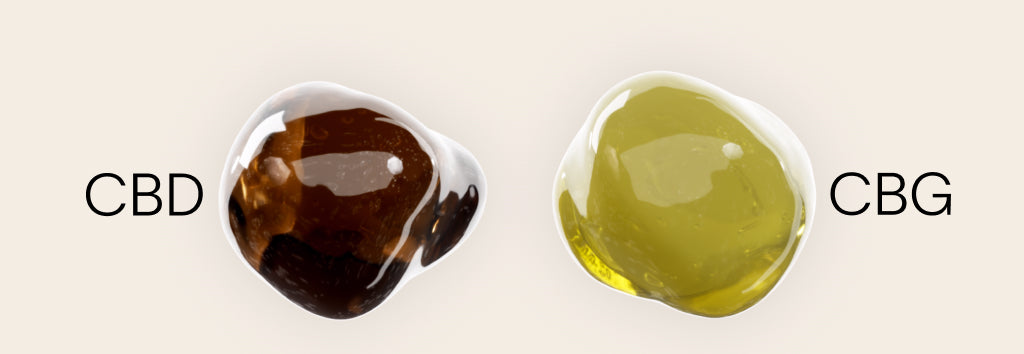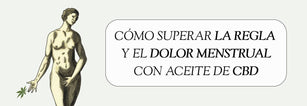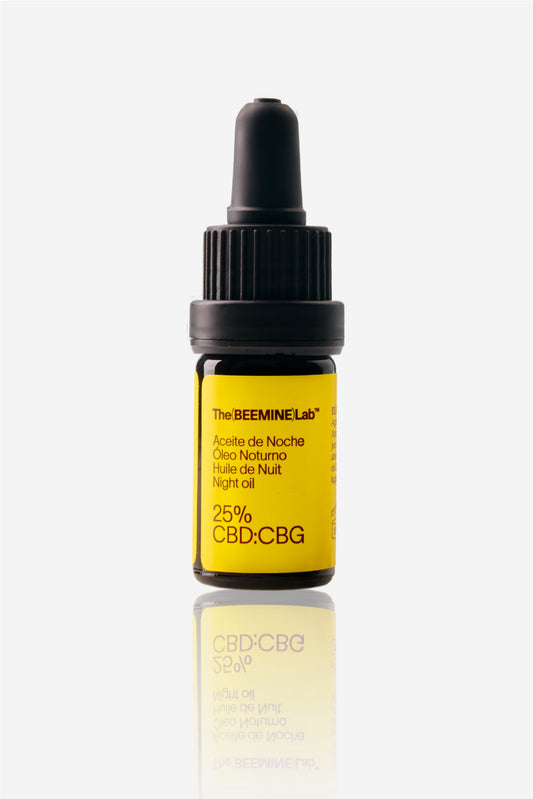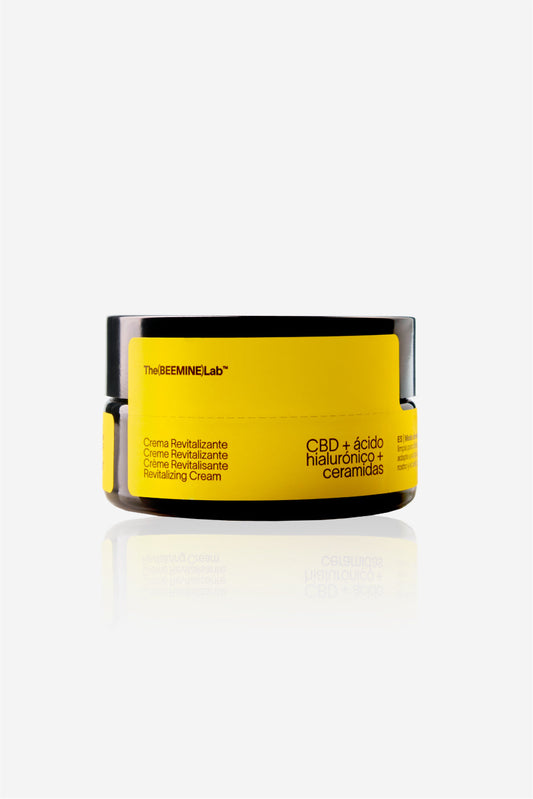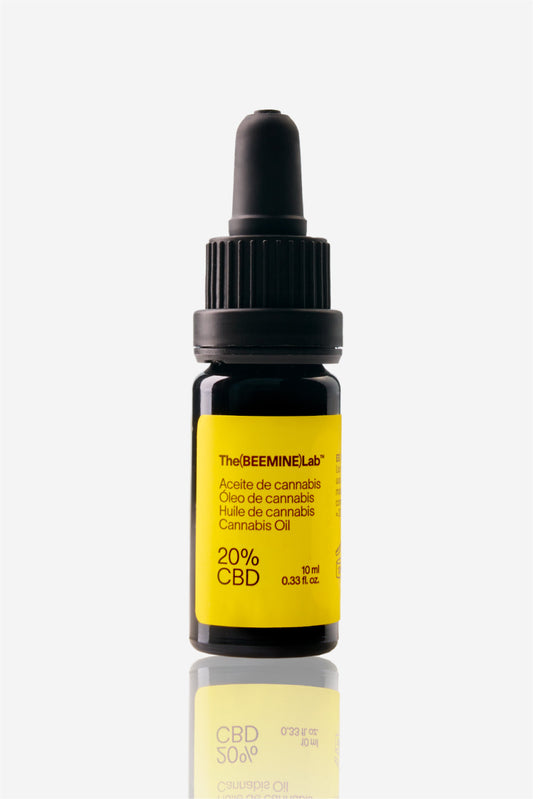The cannabis plant contains numerous different compounds (more than 480 have been described), and at least 100 of these substances are unique to the plant and for this reason are called phytocannabinoids. The most abundant and well-known to date are tetrahydrocannabinol, or THC, and cannabidiol, or CBD .
Socially, strains with a high CBD content are designated as hemp and those with THC as marijuana. However, this distinction is not very effective at a botanical level, since the plant is much more complex and each strain contains different concentrations of both CBD and THC, as well as other less abundant but no less important cannabinoids. One of the most studied today and which is causing a lot of excitement is Cannabigerol or CBG.
What is CBG?
First described in 1964 by Gaoni and Mechoulam , CBG is one of the least studied cannabinoids due to its low presence in the cannabis plant (around 1%). However, the importance of this compound is crucial for the synthesis of other cannabinoids.
All cannabinoids present in the cannabis plant are derived from cannabigerolic acid (CBGA), which is the acidic form of CBG. As the plant matures, CBGA is converted by plant enzymes into three main cannabinoid precursors:
- Tetrahydrocannabinolic acid (THCA)
- cannabidiolic acid (CBDA)
- cannabichromenic acid (CBCA)
CBD and THC are not found as such in the plant. To convert CBDA and THCA into CBD and THC respectively, we must heat the material so that a chemical process known as decarboxylaxion occurs, which consists of the loss of a CO2 molecule. [1]
From the amounts of CBGA that are not converted into these precursors, or into any of the other minor cannabinoids, CBG is also formed by decarboxylation. This would explain the low CBG content compared to the compounds that originate from it and why its mechanisms of action were until recently unknown.
However, cannabis growers can tinker with the levels of cannabinoids in their plants through selective breeding. In addition, through genetic engineering, the enzymes responsible for this conversion have been inactivated, allowing the selection of plant varieties with high CBG content, making it possible to study it and turning it into a molecule with great therapeutic potential. [2]
An easier method to preserve CBG is to simply harvest the plants early before they have had a chance to convert CBG into other cannabinoids.
CBG:
CB1 and CB2 receptors
CB1 receptors are located in the central nervous system, in areas related to cognitive functions, memory, anxiety, pain, sensory perception, etc. [3]
On the other hand, the activation of CB2 receptors is responsible for the immunomodulatory properties of CBG. [5]
TRPV receptors
These receptors mediate a wide variety of cellular functions such as pain initiation, thermoregulation, inflammation, among others. [4]
CBG inhibits the TRPV8 receptor and stimulates the activity of TRPV1, TRPV2, TRPA1, TRPV3, and TRPV4 receptors. [6]
5-HT1A receptors
They are found mainly in the central nervous system, and are involved in processes such as anxiety, addiction, appetite, sleep, pain perception, nausea and vomiting among others. [5]
CBG has been shown to stimulate the activity of these receptors. This fact is related to the anxiolytic, antidepressant and neuroprotective effect of CBG. [5]
Does CBG get you high?
Like CBD, CBG is not psychoactive. For a cannabinoid to produce psychoactive effects, it must activate CB1 receptors. CBG interacts with this receptor in a very limited way, stimulating it to a point where it does not cause these effects. In fact, it can counteract the psychoactive effects of THC when they are consumed simultaneously.
All of this makes CBG very attractive on a therapeutic level, since the psychoactive effect can be considered an unwanted side effect.
Can CBG be combined with CBD?
In addition to not having psychoactive effects, CBD and CBG share many therapeutic properties which can act synergistically if used together and offer a more beneficial effect than when used separately.
This cooperation between several components of the Cannabis plant to obtain a more potent effect is called the entourage or synergistic effect.
For example, both CBD and CBG have a neuroprotective effect. However, CBG does this by stimulating the production of proteins called BDNFs, while CBD works by increasing the levels of anandamide, a neuroprotector that modulates CB1 receptors. Therefore, although they are different in several aspects, CBD and CBG could be a great combination if consumed together.
In fact, the neuroprotective aspect of these two Cannabinoids together has been specially studied , indicating that their effects are enhanced when combined.
Differences between CBG and CBD
| CBG | CBD | |
|---|---|---|
| Where it is most abundant | Premature hemp flowers (early harvest) and special varieties) | Mature hemp flowers |
| Effects on inflammation | Anti-inflammatory effects (IL-1, IL-10, IFN-?) | Anti-inflammatory effects (TNF-a, NFkB, IFN-?, IL-4, IL-6, IL-8, IL-12) |
| Availability | Hard to find | Widely available |
What products are marketed with CBG?
Currently in Spain, the cultivation and marketing of cannabis-derived products is permitted, as long as they contain less than 0.02% THC.
However, it is rare, although possible, to find formats such as CBG oil, cream or balms enriched with CBG and other cannabinoids.
Conclusions
For now, we know that one of the keys to its effectiveness lies in its combination with other cannabinoids and plant components (terpenes, flavonoids, etc.). But there is still much to learn about the mother of cannabinoids, and as the science of Cannabis grows, we will remain attentive and listening to what this plant can do to improve the quality of life of people around the world.
References:
- Degenhardt F, Stehle F, Kayser O. The Biosynthesis of cannabinoids. In Handbook of Cannabis and Related Pathologies. 2017, Pages 13-23.
- S Deina. Potential Medical Uses of Cannabigerol. A Brief Overview. In Handbook of cannabis and related pathologies. 2017, Pages 958-967.
- Katona I, Freund TF. Multiple functions of endocannabinoid signaling in the brain . Annu Rev Neurosci. 2012.
- Zhang HY, Gao M, Shen H, Bi GH et al. Expression of functional cannabinoid CB2 receptor in VTA dopamine neurons in rats . Addict Biol. 2016.
- Ethan B. Russo. Cannabis Pharmacology: The Usual Suspects and a Few Promising Leads. In Advances in Pharmacology. 2017, Pages 67-134.
- TV Zanelati,* C Biojone,* FA Moreira, FS Guimarães and SRL Joca . Antidepressant-like effects of cannabidiol in mice: possible involvement of 5-HT1A receptors . Br J Pharmacol. 2010.

